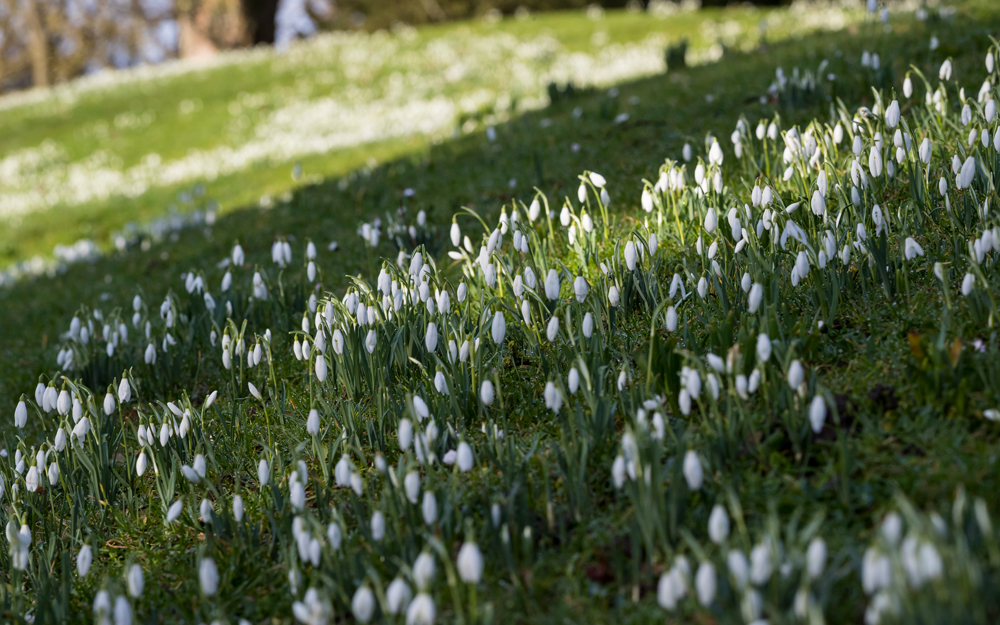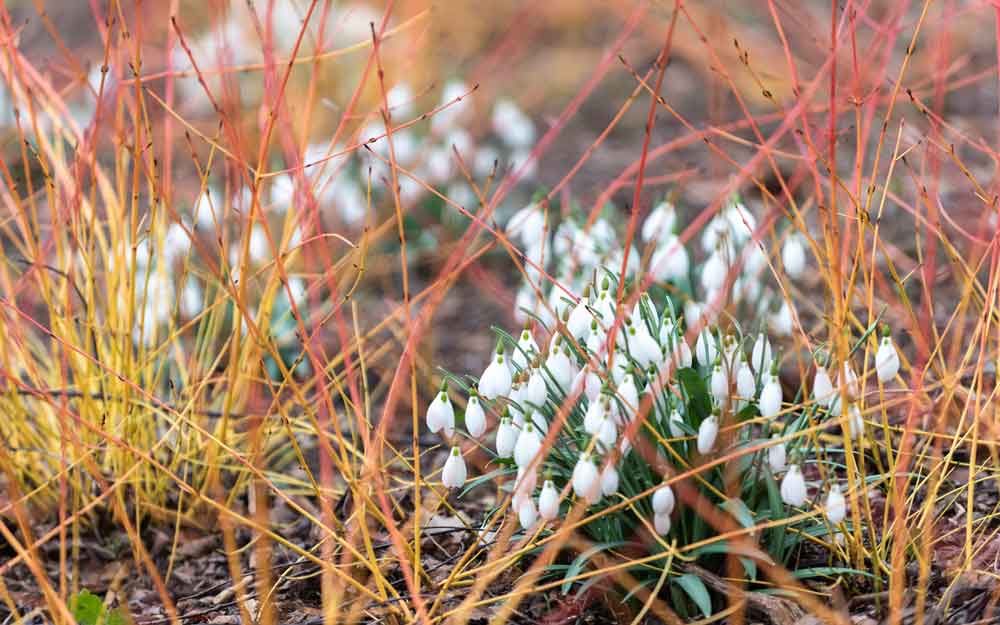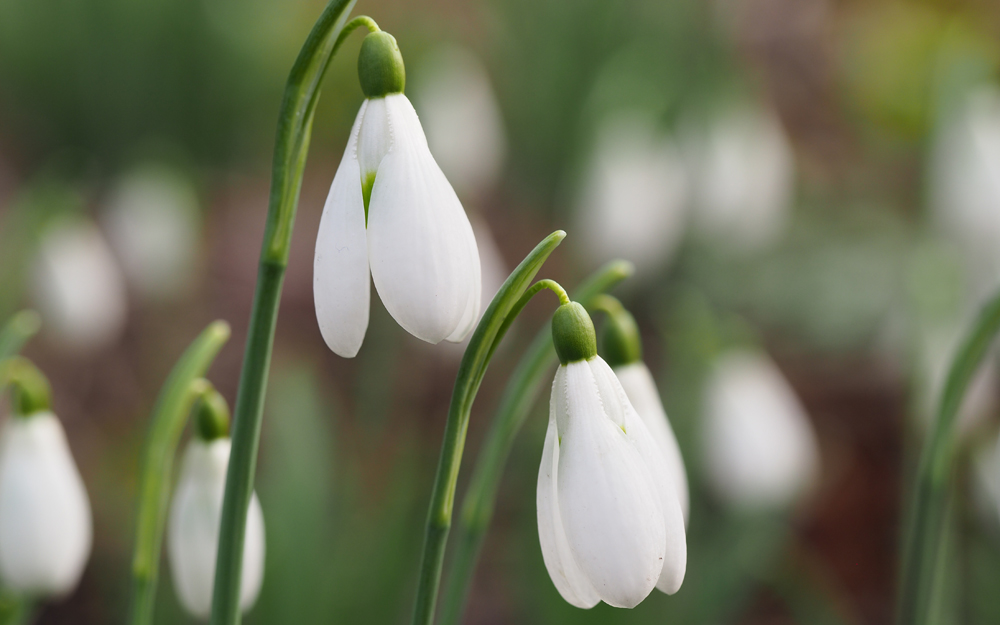
Snowdrops: did you know?
As blankets of white creep into the gardens, our Gardens Manager celebrates the snowdrop with 10 fun facts.
1. There are estimated to be around 20 different species of snowdrops and most of these flower between January and March.
2. There are a few forms that flower during late autumn (November).

3. Snowdrop flowers are either single or doubles forms.
4. More forms of snowdrops are introduced each year and there are subtle variations in how the flowers develop and also a variation of coloured green or yellow markings on the flower.
5. In 2015, a single bulb of Galanthus plicatus ‘Golden Fleece’ was sold for £1,390 on eBay.

6. There are many avid collectors of snowdrops who are often referred to as galanthophiles.
7. The most commonly grown snowdrop at Waddesdon is Galanthus nivalis, the common snowdrop. Galanthus is derived from the Greek word ‘gala’ meaning milk and ‘anthos’ referring to the flower, while ‘nivalis’ means snowy. At Eythrope Gardens they grow over 70 different types of snowdrop.
8. There are many regional common names for the snowdrop including the ‘fair maid of February’, the ‘milk flower’, ‘Candlemas bells’, ‘common bells’, ‘little sisters of the snow’ and the ‘purification flower’.

9. Snowdrops can be grown in a wide range of soils and garden locations, and are tolerant to a wide range of soils. For maximum effect, they are best grown in large swathes beneath trees and shrubs or drifted through lawn areas. Once established they will spread to form large masses.
10. Snowdrop clumps can be divided after they flower in early spring, which is often referred to as ‘in the green’ or while the bulbs are dormant in June.







